Pioneer abalone farmer and author goes in depth on the future of aquaculture in the United States
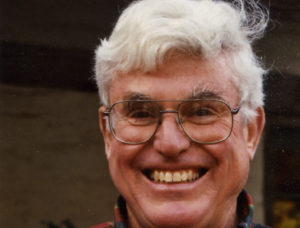
If you believe the United States should commit to aquaculture and help to grow the industry in domestic waters, George S. Lockwood is playing your song. He’s been on the front lines of this conflict for decades as an entrepreneur, as a former president of the World Aquaculture Society and as founder and president of the California Aquaculture Association. And he’s arguably done more than anybody to establish federal rules for organic seafood production.
Lockwood is a pioneer shellfish farmer who in 1972 established Monterey Abalone Farms, which later became Ocean Farms Hawaii, an innovative and integrated multi-species fish and shellfish farm. Aquaculture development in U.S. waters may be held back by misinformation, fear and confusion, but Lockwood believes it will one day overcome those obstacles.
It’s a subject close to his heart: In early February, his opinionated 200-page book, “Aquaculture: Will it Rise to Its Potential to Feed the World?” was released on Amazon. In it, he pulls no punches about the industry’s shortcomings and the political and economic forces that have prevented many political leaders and investors from embracing it.
Not one to mince words, Lockwood sat down for a one-on-one, in-depth interview in March to share his insights on investment, the politics of food and his (seemingly) never-ending quest to get the U.S. Department of Agriculture to adopt official standards for organic seafood.
The powers of NIMBY (not in my back yard) are still holding aquaculture back, aren’t they?
There’s no question about it. We have a society where just a few people can organize and kill all sorts of things. About five years ago I calculated that our entire consumption of salmon, at that time in the United States, would be satisfied by 250 large, state-of-the-art salmon farms in U.S. waters. That’s not a lot. On the Pacific Coast, in the Strait of San Juan de Fuca, you could easily hide 100 or so salmon farms amongst all those islands. And in Maine, with all those bays, you could easily accommodate another 100 or so. That would satisfy our complete consumption, but instead, what do we do? We import from New Brunswick and British Columbia. This is not in our nation’s best interests. And financing innovative new things is not possible these days, since the 1970s.
What do you believe is the main reason for that?
Historically, in our country, innovators have popped up wherever they happen to live. And in order to take advantage of what they do, the local community – friends, neighbors, relatives – was the source of funds. During the Nixon administration in the 1970s, Congress decided that people should not be trusted to save for their own retirements. So we set up IRAs (individual retirement accounts), which gave people enormous tax benefits to take their savings and, instead of investing locally, to send it off to money centers in New York City. Once the money gets there it has to – by law – be in blue ribbon stocks and not local things, with rare exceptions. What we created was an enormous flow of cash to Wall Street, which has gone into private equity and hedge funds and other socially unproductive purposes. In the meantime, the number of small business has declined since the 1980s. Innovators in all sorts of fields aren’t able to do their jobs – they don’t have capital, because all their friends and neighbors are in 401k plans.
The image of aquaculture in the eyes of the public has been generated by our adversaries.
Nobody seems to be concerned about this, but right now there are trillions of dollars in IRAs in various Wall Street investments. Some of that money comes to venture capital, about $40 billion a year. But aquaculture and venture capital don’t mix. Venture capital won’t touch it for a number of reasons. For one, they don’t invest in highly regulated industries; 50 percent of venture capital funds last year went into software and social media. Those are unregulated industries. What venture capitalists want is to sell their investments in five to seven years, with very large gains – that’s their model. Aquaculture doesn’t fit that. You often have to wait three to four years before you can even begin to build facilities. Then it takes four to five years to start making money. That’s almost 10 years that’s gone by. In 10 years, venture capital firms are liquidating their portfolios. We have no money available for aquaculture entrepreneurs, is what it boils down to.
The United States is one of the leading seafood markets in the world and a top export market for high-value products. More than nine of every 10 pounds of seafood Americans eat is imported, and much of that is farm-raised. Why such resistance to growing our own seafood here, in U.S. waters? I know that U.S. officials say they want to get it right, but don’t you have to at least get your feet wet before you can swim?
[Laughs] Well, to me there are three reasons we have this enormous trade deficit in seafood. For one, the regulatory environment is a killer. Everywhere you go, it’s difficult; it’s time-consuming; you must do expensive environmental-impact statements that can total hundreds of thousands of dollars; you go to a multitude of hearings; and you put your money up front, but you don’t know if you have a viable business coming out the other end! So people don’t do it! People look at the daunting permits you need to get started, and they don’t enter the field.
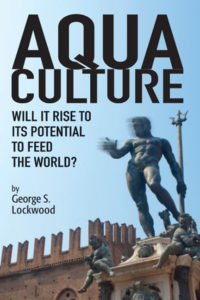
Regulations at the federal, state and local levels are very daunting. Our federal government continues to support our states to write coastal management plans that do not look favorably on aquaculture. The regulatory climate is a barrier to entry. Then, of course, we have laws that, once you are in business, are very controlling. The Lacey Act for freshwater fish farmers is a killer. They can’t transport their fish without running the risk of criminal liabilities.
Secondly, the image of aquaculture in the eyes of the public has been generated by our adversaries. Never in the last 20 years has there been an organization in the United States that has mounted any sort of effort to challenge their claims. We haven’t had an effective voice to help shape public opinion in our favor. This permeates government officials thoroughly.
The third barrier we talked about earlier: There’s virtually no capital that flows into the entrepreneurs that are going to going be necessary to build this industry. Capital doesn’t come from the asking – investors have to have incentives. The tax system we have does not provide incentives for aquaculture, while it does for many other kinds of investments, including IRAs. If you’re successful in an aquaculture business, and you become profitable, you’ll soon pay 40 percent income taxes. General Electric, on the other hand, because of its ability to negotiate with Congress and the [Internal Revenue Service], in some years only pays 12 percent. There’s a tremendous tax burden thrown upon aquaculture ventures if they become successful.
Bad aquaculture news tends to linger, past the point of relevancy, and you believe that there are “enemies” trying to stoke the fires. Who are these enemies and how can industry best engage with them?
For many years, from about 1990 until maybe five years ago, there were four major foundations in the United States that supplied tens of millions of dollars a year to about 35 NGOs in Canada, in an attempt to, as one of them said, “de-market farmed salmon.” A particular target was the British Columbia industry, but also production elsewhere, including New Brunswick. These foundations were Pew Charitable Trusts, the Gordon and Betty Moore Foundation, the Hewlett Foundation and the Packard Foundation. As I indicate in the book, a person who worked for one of these organizations, who was active in their publicity efforts, said, “Tormenting fish farmers is fun.”
There was one report after another, and the MD from Harvard, a guru of healthy eating, condemned farmed salmon and others condemned it as not environmentally sustainable. Their source was the NGOs in Canada – and there was nobody refuting them. At the World Aquaculture Society, when former presidents would get together, I and several others would say, “It’s time we call upon our many scientist members to refute this bad science that is being promulgated in America.” And they all ran for the hills. WAS had no interest whatsoever in getting into public squabbles.
The simple fact is there were answers to these questions that have stuck in the minds of a lot of people. You go to the fish market today, you hear somebody say, “Is that farmed? If it is, I don’t want it.” And I sometimes ask them why they’re opposed, and they say, “They eat pellets.” I then wonder if they feed pelleted food to their pets. I had a medical doctor in Monterey, he said he doesn’t eat farmed fish because they swim in their own feces. I said, “What do you think they do in nature?” I make some headway sometimes.
What about Food and Water Watch? I know they have made passage of U.S. organic seafood standards quite difficult.
They are the last bad survivor. They have, in essence, killed our efforts to get the organic label in the United States. And they did it with all sorts of subterfuge.
The National Organic Program (NOP) in the U.S. Department of Agriculture reports to the director of the Agricultural Marketing Service (AMS), who reports to the Secretary of Agriculture. In January of last year, a one-year appointee was named to be the head of AMS, and that person came out of Food and Water Watch. And here we were, going into final rulemaking for rules for organic aquaculture with the Office of Management and Budget (OMB) and that person, Elanor Starmer, got involved in the whole thing. Then a number of people complained that she had a conflict of interest, that she should be recused; and she indeed recused herself. So we then began to make progress again with OMB. (Editor’s note: Starmer was the western region director for Food and Water Watch from 2008 to 2011, and is now a senior fellow at George Washington University.)
Then, with the change of administration early this year, there was a rush in the weeks before inauguration to get a lot of pending stuff out of the OMB. We were told that we were in the queue to be released. Two days before the inauguration, Starmer held a press conference and said organic standards for aquaculture will not be released. That’s the power of Food and Water Watch. She’s out, but now everything is in a state of turmoil. It’ll probably take six months before this administration has people in place and probably another six months before they start thinking seriously about these issues.
So much of the future of aquaculture depends on money. You write that the United States has invested roughly $1 billion in aquaculture research over the past decade, but has little development in domestic waters to show for it. Has that money been poorly spent? Should investments we make in aquaculture be more business-oriented, as opposed to research?
What we have to show for it is an industry, according to the latest USDA Aquaculture Census, that produces $732 million of food fish. So, have we gotten our money’s worth? Much of the technology that has been developed here is transferred overseas. There are enormous quantities of shrimp worldwide, and the industry’s technological beginning was in the United States – we developed all that technology and a lot of that has been transferred overseas.
What are some primary examples of exporting technology and knowledge?
Look at the salmon industry – hatcheries have gone, in most places, to recirculating aquaculture systems (RAS). The United States has invested a lot of money in perfecting RAS. I’m not claiming that American technology is responsible for the worldwide salmon industry’s success, but it’s an important part of it, and we made a major contribution. Shrimp technology, as practiced in South America and Asia, largely has its roots in the United States.
At research universities like Auburn University, many if not most of the students are foreigners. Our academic resources are training people overseas to raise food to feed our market. I have no reason to believe that that money has not been well spent. I think we have outstanding research institutions, and Auburn is one of them. The money has not been wasted, it’s not a boondoggle. The U.S. industry has a lot of technology we can use here at home as a result of this investment. We have the research institutions in place to support an industry, to the extent that industry needs support. It’s not for lack of research.
What venture capitalists want is to sell their investments in five to seven years, with very large gains – that’s their model. Aquaculture doesn’t fit that.
I was a principle drafter of the National Aquaculture Act of 1980. It took three years to get it through Congress. Amongst other things, it directed the government to be acutely aware of the capital needs for the development of the aquaculture industry. Now, Jamie, this was 40 years ago. There has been no attention paid to that need. We could see it in the 1980s: We’d need capital to build a viable industry with farms, feed mills, processing facilities and trucks and all that. We directed the Secretaries in that act to coordinate in terms of regulatory relief and research, but they also had to pay particular attention to the capital needs of aquaculture – and they did not. So, we have the legislation in place. The National Aquaculture Act is a good act, and what it calls for is work through a Joint Subcommittee on Aquaculture. It’s now called the Interagency Working Group on Aquaculture. They get together once every three months. When Gary Jensen of the USDA was running it, they did a good job to the extent that they had authority in terms of regulations. They’d work with (the Environmental Protection Agency) to get a workable discharge act, the Army Corps of Engineers, the U.S. Food and Drug Administration and other agencies. In interacting with the field, Gary did a great job. Well, Gary’s retired now.
It’s a group of mostly life-science Ph.D.s that are part of the interagency working group. Capital formation and availability is a serious subject and they don’t know anything about it! They have no reason to know anything about it. They can take on the EPA, for instance, when they’re in rulemaking and help them understand what works and what doesn’t. But when it comes to capital flow, it’s not what life-science Ph.Ds. are educated to do. Financing is kind of a foreign subject to them.
Shellfish farms are largely in favor with the federal and state governments, but finfish farming is another story. Is there a future for farming species like salmon, striped bass, trout, flounder or other types of high-value species along U.S. shorelines?
I think there’s a great future. I’d like to see more salmon farms in Maine and in Puget Sound. What Michael Rubino is pioneering in the Gulf of Mexico is fantastic, but nobody is investing – the leases are tentative. He’s made good progress and has doggedly pursued that, and I give him credit. Out here in California, Sea World has been trying for 30 years to start Rose Canyon Fisheries. And Don Kent, bless him, he’s spent a career trying to get permits. Whether or not he’s going to do it, I don’t know. To have a source of the species that grows in Southern California – there’s a market waiting for it. Right now, there are several net-pens operations in neighboring Baja California, in La Paz. If you can grow fish in net pens off the coast of Baja California, why not here, off the coast of California? It’s because the regulatory gauntlet is so impossible. What Rubino is saying is, we’ll get out of state waters and into federal waters, and get out of state jurisdiction. It’s a mess, so he’s saying let’s get out. Good. You still have to have permits. Just not as many and not as onerous.
But then you have a whole new set of operational challenges, with distance and weather.
It’s less efficient for crews to go out to feed fish, and spend hours in a boat. If there’s trouble out there, it takes a couple of hours to get to it. But they’re going to make it; look at the Gulf of Mexico. There’s an infrastructure supporting it, with all those abandoned oil platforms – they’ll make great fish farming sites.
The conditions can get pretty rough out there, though, and stormy.
No rougher than offshore of the Atlantic Ocean or the Pacific Ocean. In fact, it’s a lot milder. But yeah, they have hurricanes every year.
Seafood, and aquaculture, need some youth in the industry. How can it become a more attractive option for young people seeking careers?
If we have job openings for them – I don’t think it’s anything more than that. People like growing fish, and animals, particularly women. But there are no jobs for them. I know one person after another who has said aquaculture is the future, so they went and got a bachelor’s degree, and a master’s degree, and now there are no jobs for them. And if they get a Ph.D., there might be a job teaching here and there. No jobs because people can’t get sites, get business plans developed, get permits – then they get hostile customers, hostile investors, hostile government, a bad image and their friends and neighbors don’t support them and other small businesses because they’re sending their money off to protected IRA accounts. It’s a big factor.
Venture capital does not take care of it. Our professional economists don’t understand the innovation process. Fifty percent of all venture capital goes to software and it’s all in Silicon Valley. Is Palo Alto the only place with gifted innovators in the United States?
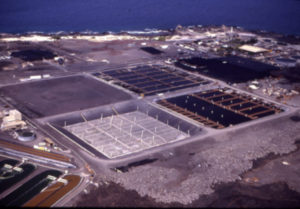
You are considered a pioneer in abalone farming, and your operation in Hawaii, back in the early 1990s, was as close to an organic seafood farm as there ever has been. In your mind, what are the key principles that make seafood organic?
The field of organic food production has a number of principles that control it. It started after World War II. In farming in those early days, you’d recycle manure from your cattle, use that for your corn and oats. And in your pasture, you have multiple species and they all interacted. This is how farming was done around the world. Then there was big development in ammonia and nitrate, from the natural gas business. Fertilizer did a lot to increase agriculture output. But it also did things people objected to. Then Rachel Carson came along in the 1970s and wrote “Silent Spring,” which affected a lot of people, and there was a whole wave going away from the industrialization of food. Fertilizers were part of that problem. They started developing all these so-called organic principles of growing: no industrial chemicals, no pesticides, no herbicides, you use insects to kill other insects and so forth.
The Organic Food Production Act was written in 1990s to set up how to codify all the organic principles. In some respects, it’s not science-bound. But there’s a lot of science behind organic production. A lot of people don’t want pesticides in their food. The leftover chicken parts, that you make poultry meal out of and feed to other animals, including fish – a lot of people object to that, and Jewish people are among those that don’t want to eat pork. In organic principles, you can’t use animal meals for nutrition for that very reason, so people know that when they’re eating chickens, they’re not eating pork by way of chickens, or vice versa. It’s a thumbnail sketch of what organic production is all about. About 5 percent of all food consumed in the United States has the USDA Organic label. Basically it’s about getting back to having pure production systems.
By the 1990s, the USDA had established the National Organic Standards Board that was responsible for making recommendations for final rulemaking for organic standards for the United States. Up until that time, there were 85 different organizations with different standards throughout the United States. In 1999, the NOSB got to aquaculture. They did chickens and pork and everything else, and said let’s get to fish now. What they came up with had no semblance of reality whatsoever. I said please don’t adopt these; nobody can farm to them, they’re meaningless. Let the industry and the organic community get together and work out some workable standards. And we did. In 2005 we started with NOSB in creating standards for fish and shellfish and spent five years with it. There was a group of 12 of us, appointed by Secretary of Agriculture. We worked very diligently. But what happened was people like Food and Water Watch and others were so opposed to aquaculture being organic, everything has been stalled.
Author
-
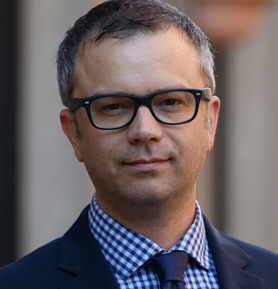
James Wright
Editorial Manager
Global Aquaculture Alliance
Portsmouth, NH, USA[103,114,111,46,101,99,110,97,105,108,108,97,101,114,117,116,108,117,99,97,117,113,97,64,116,104,103,105,114,119,46,115,101,109,97,106]
Related Posts
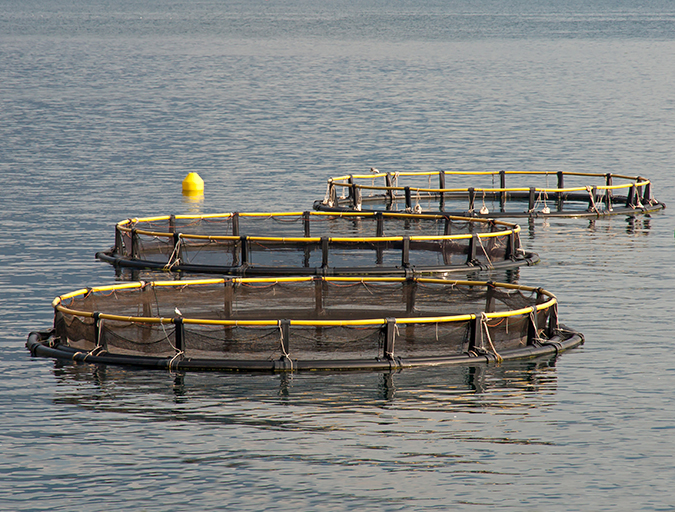
Intelligence
Rubino, Knapp lay out ‘political economics’ of U.S. aquaculture
Michael Rubino and Gunnar Knapp list key reasons why U.S. marine aquaculture has been limited to a scale far below its vast potential.
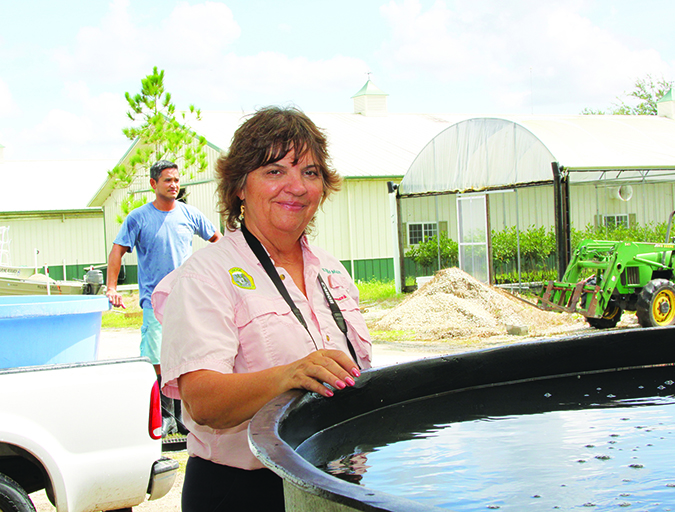
Responsibility
White House awards hint at aquaculture’s potential in the United States
The latest Champions of Change awards celebrated the work of change-makers in sustainable seafood, from chefs to fishermen to aquaculture advocates. With innovation and perseverance, the industry may soon meet its vast potential.
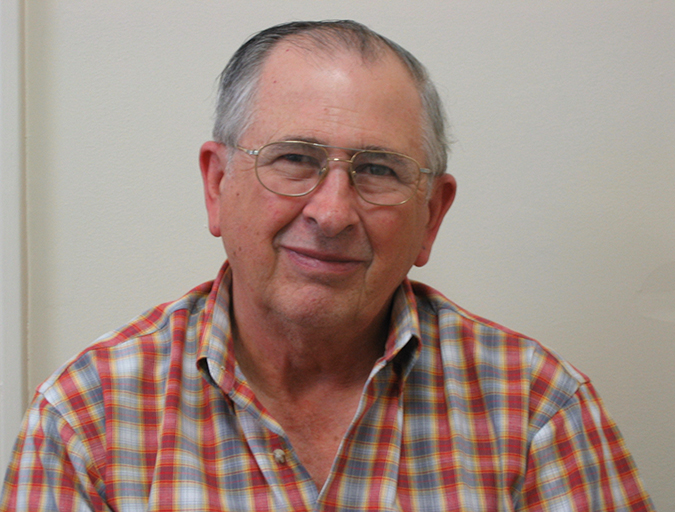
Innovation & Investment
After half a century, Auburn’s Claude Boyd to ‘retire’
Friends, colleagues and former students of longtime Auburn University Professor Claude E. Boyd, Ph.D., don’t expect the Mississippi native to slow down, despite the quiet announcement of his retirement earlier this month. The 50-year veteran researcher’s career has been truly extraordinary.
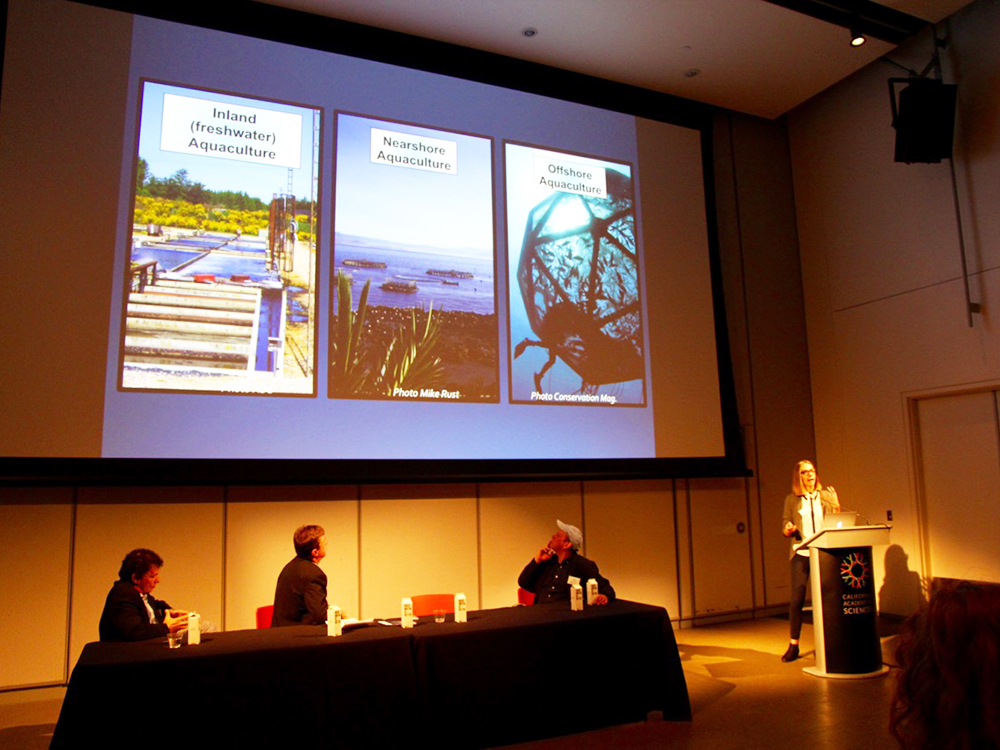
Responsibility
Going deep on offshore aquaculture
Open-ocean aquaculture, the “new kid on the block” in the rapidly growing aquaculture industry, was examined at a California Academy of Sciences event. New contributor Twilight Greenaway reports.

